Why do you need and how to use an antistatic agent for washing clothes in a washing machine?
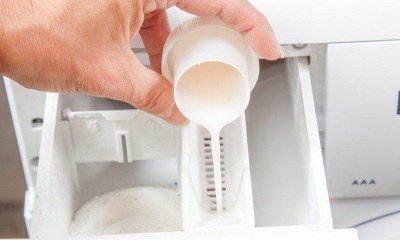 Many things can build up static electricity. You can prevent its appearance even at the washing stage with the help of special compositions.
Many things can build up static electricity. You can prevent its appearance even at the washing stage with the help of special compositions.
How to make a choice and how to properly use modern antistatic agents for washing linen and clothes in a washing machine, read the article.
Content
What is it used for?
 Antistatic - this tool based on:
Antistatic - this tool based on:
- alcohols,
- silicone,
- Surfactant,
- other active ingredients.
The main purpose of using it is prevent the accumulation of electrical charges on the fabricso that after such treatment it will cease to "be shocked".
They stick to:
- villi,
- hairs,
- dust particles.
Antistatic agents are the solution to all these problems.
Kinds
There are several types of antistatic agents that can be used on clothing:
-
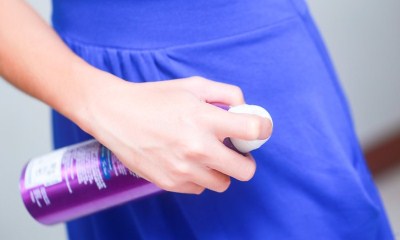 Alcohol sprays... They are represented by cans that contain ethyl alcohol and other auxiliary components (propane, isobutane, perfume).
Alcohol sprays... They are represented by cans that contain ethyl alcohol and other auxiliary components (propane, isobutane, perfume).Sprays are used after washing, treating electrifying things with them. The aerosol not only removes static electricity from clothing, but also softens fabrics.
However, a significant disadvantage of such funds is an unpleasant odor that remains on things for some time.
- Water sprays... They include: silicone, demineralized water, preservatives and other auxiliary components. Such formulations do not have a pronounced odor and rarely cause allergies. Use them after washing things.
- Conditioners (liquid gels). It is these antistatic agents that are used when washing electrifying things. In addition to eliminating static electricity, such tools can solve a number of other problems, namely: to make fabrics soft, facilitate ironing, and maintain color saturation.
The working components of antistatic air conditioners are surfactants and silicones, under the influence of which the thinnest film is formed on things. The charges roll down along it, without settling on the fibers.
- Cream paste... Such compositions are used as rinses for fabrics after the main wash. They are added to water, stirred and electrifying things are dipped in them for a few minutes.
Terms of use for processing clothes
It is necessary to use an antistatic agent when washing in accordance with the recommendations given by the manufacturer. Depending on the brand, the dosage of the conditioner will vary.
Universal instructions for use antistatic agent for washing in an automatic machine:
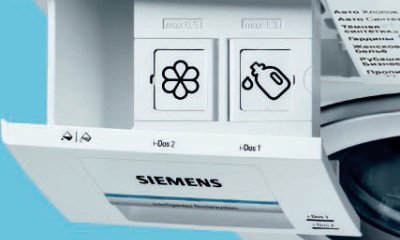 put things in the drum of the washing machine;
put things in the drum of the washing machine;- select the desired program;
- pour the gel into a special compartment - most often it is marked with a “flower” or “asterisk” icon;
- turn on the wash cycle.
The antistatic agent can be used for washing in both hot and cold water.
If manual processing of fabrics is to be done, then the agent is added after its completion.... The product is dissolved in water, a thing is immersed in it, soaked for 5 minutes, and then rinsed thoroughly.
What to replace?
Household antistatic agents can be replaced with improvised means. It turns out that many substances that everyone has in their home have the ability to remove static electricity.
They need to be added to the water during the rinse phase. after the main wash:
- Vinegar. To prepare the solution, you will need 1 tbsp. l. vinegar 9% and 1 liter of water. Such a home air conditioner will not only save clothes from electricity, but will also help to rinse out the remaining detergent better.
- Hair conditioner + vinegar 9% + water (2: 3: 6 ratio)... All components are mixed and poured into rinsing water.
- Salt: up to 3 tbsp. l. for 5 liters of water.
- Lemon acid... For every 10 liters of water, it is taken in the amount of 2.5 tbsp. l.
How to choose the best one?
Before making a purchase of an antistatic agent for washing, you need to pay attention to the following points:
-
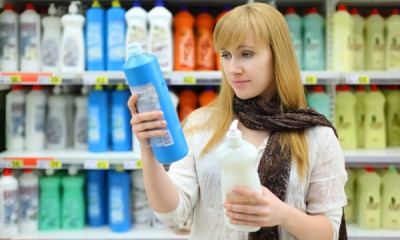 Composition. An antistatic agent can contain: surfactants, silicones, alcohols, acids, glycerin. The fewer aggressive components on this list, the better.
Composition. An antistatic agent can contain: surfactants, silicones, alcohols, acids, glycerin. The fewer aggressive components on this list, the better.Be sure to pay attention to fragrances and fragrances. Many people prefer odor-free products.
- Method of use... Conditioners are added to the washing machine immediately, when washing. Sprays and aerosols are used to treat things after it is completed.
- Secondary functions... In addition to removing static electricity, many antistatic agents have an additional effect on fabric: they whiten or preserve the color of things, make them softer.
- What products will it be used for? There are products designed only for the care of baby things. They have a reduced level of surfactants, contain a minimum of fragrances, thereby reducing the risk of developing allergies.
The composition of children's products should be free of such components as: A-terpineol (affects the nervous system), ethanol (impairs brain function), benzyl alcohol (can cause nausea and dizziness), linalool (impairs coordination of movements).
- Cost. The price depends on the manufacturer of the antistatic agent. Eco-friendly products are more expensive than conventional products.
Top 3 popular products
The most popular antistatic agents for washing, which are in demand by consumers:
Lenor Scandinavian Spring
It is an inexpensive fabric softener that removes static electricity. This gel can only be used to care for adult clothing.
It contains:
- cationic surfactants,
- aldehyde,
- flavors,
- linalool.
Lenor for children is chosen for washing diapers and undershirts, with an adapted composition. The cost of 1 liter is about 120 rubles.

Eared nanny
it the product is intended for children's clothes:
- does not contain dyes,
- softens laundry
- contains aloe vera,
- passed all the necessary dermatological tests,
- does not cause allergies.
For hand wash, 1 cap (45 ml) is required for every 10 liters of water. For machine washing, take 2 measuring caps (90 ml) for every 4-5 kg of laundry. The cost of 750 ml of the product is about 80 rubles.
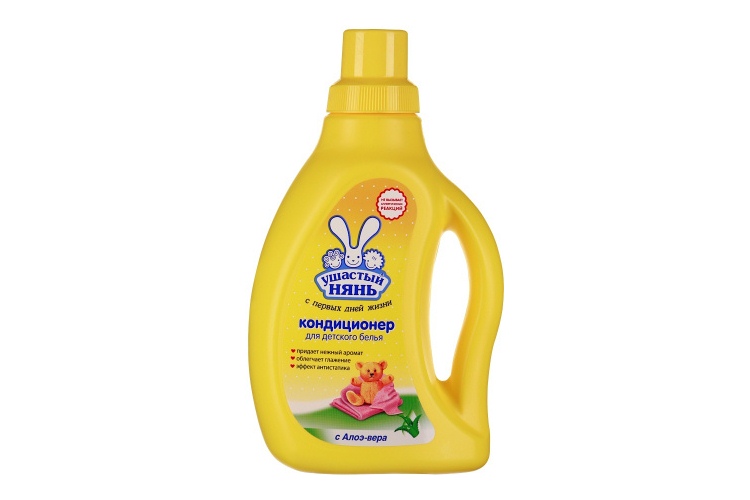
Synergetic
This biodegradable, anti-static laundry detergent has a Russian environmental certificate.
It includes:
- structured water,
- silver ions,
- plant complexes,
- aromas based on natural oils,
- food coloring.
For every 5 kg of laundry you need 30 ml of fabric softener, so 2.75 liters is enough for 90 washes. Its cost is 230 rubles.
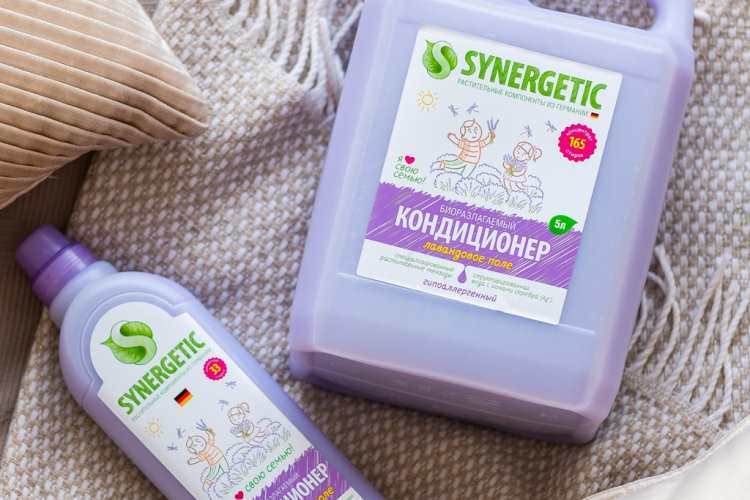
Important recommendations
Before washing your laundry with an antistatic agent, you need to read the following recommendations:
- Calculate your dose accurately. If you use an excess of antistatic agent, then things will not rinse. A specific smell will come from them, so wearing such clothes is not comfortable. If you pour too little antistatic agent into the machine, then it will not have the desired effect.
- It is recommended for people with allergies to use products designed for washing children's clothes.
- If bleach is included in the antistatic agent, then it is not used for washing black clothes.
- To soften fabrics, choose a product that contains silicone.
- After machine wash using an antistatic agent, the item does not need additional processing. After hand washing, the garment must be rinsed.
Conclusion
An antistatic agent removes static electricity, softens your laundry and gives it a pleasant scent. It can be used for both hand and machine wash.
When choosing a gel, you need to focus on several parameters, the main of which is its composition.
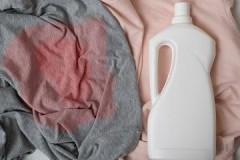
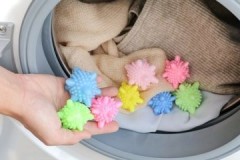
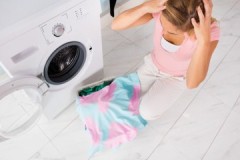
 Cleaning
Cleaning Wash
Wash Ironing
Ironing Technics
Technics Cleaning products
Cleaning products Storage and care
Storage and care